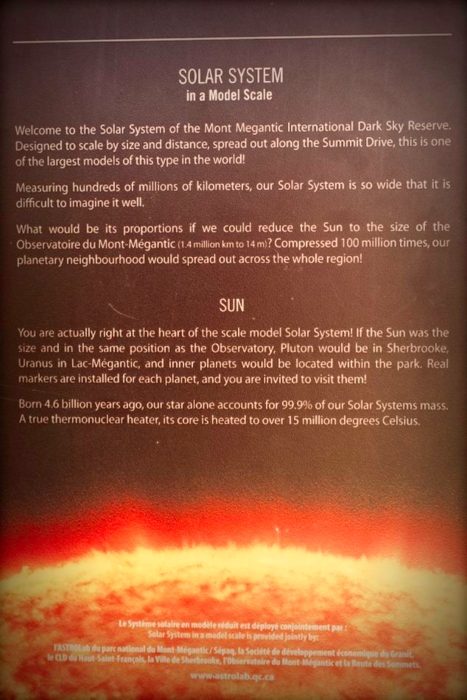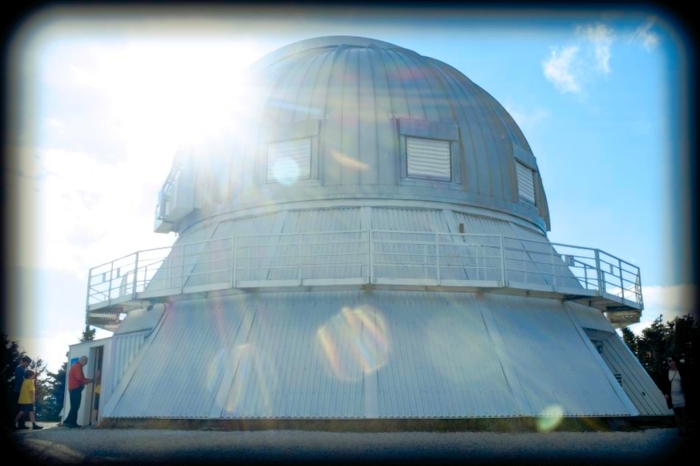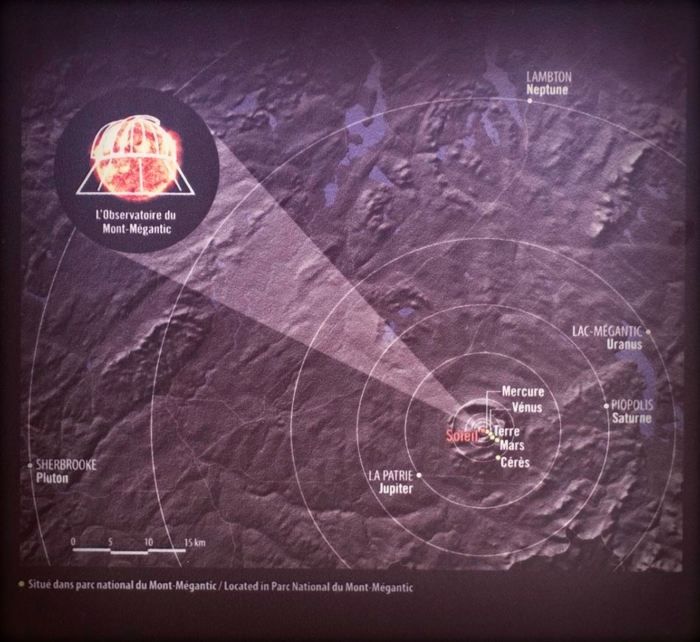For our final inspection of the solar system, we visit the observatory museum and telescope at Mont Megantic National Park. We took an educational tour of the museum, then we drove up to the telescope at the top of the hill. Sometimes, they have sky shows at night. We didn’t see one.
They have a larger and more permanent model solar system than the one that we built. We found all the rock planets and Ceres, formerly known as a rock planet, now classified as part of the asteroid belt between Mars and Jupiter. The English language version of the interpretive sign reads as follows,—

SOLAR SYSTEM
in a Model Scale
Welcome to the Solar System of the Mont Megantic International Dark Sky Reserve. Designed to scale by size and distance, spread out along the Summit Drive, this is one of the largest models of this type in the world!
Measuring hundreds of millions of kilometers, our Solar System is so wide that it is difficult to imagine it well.
What would be its proportions if we could reduce the Sun to the size of the Ovservatoire du Mont Megantic (1.4 million km to 14 m)? Compressed 100 million times, our planetary neighbourhood would spread out across the whole region!
SUN
You are actually right at the heart of the scale model Solar System! If the sun was the size and in the same position as the Observatory, Pluton would be in Sherbrooke, Uranus in Lac-Megantic, and inner planets would be located within the park. Real markers are installed for each planet, and you are invited to visit them!
Born 4.6 billion years ago, our star alone accounts for 99.9% of our Solar System’s mass. A true thermonuclear heater, its core is heated to over 15 million degrees Celsius.

The map.

Download this PDF to locate all the planets:
https://www.astrolab.qc.ca/wp-content/uploads/2019/06/18_211_pnmm_guide_systeme_solaire_geant_en.pdf



